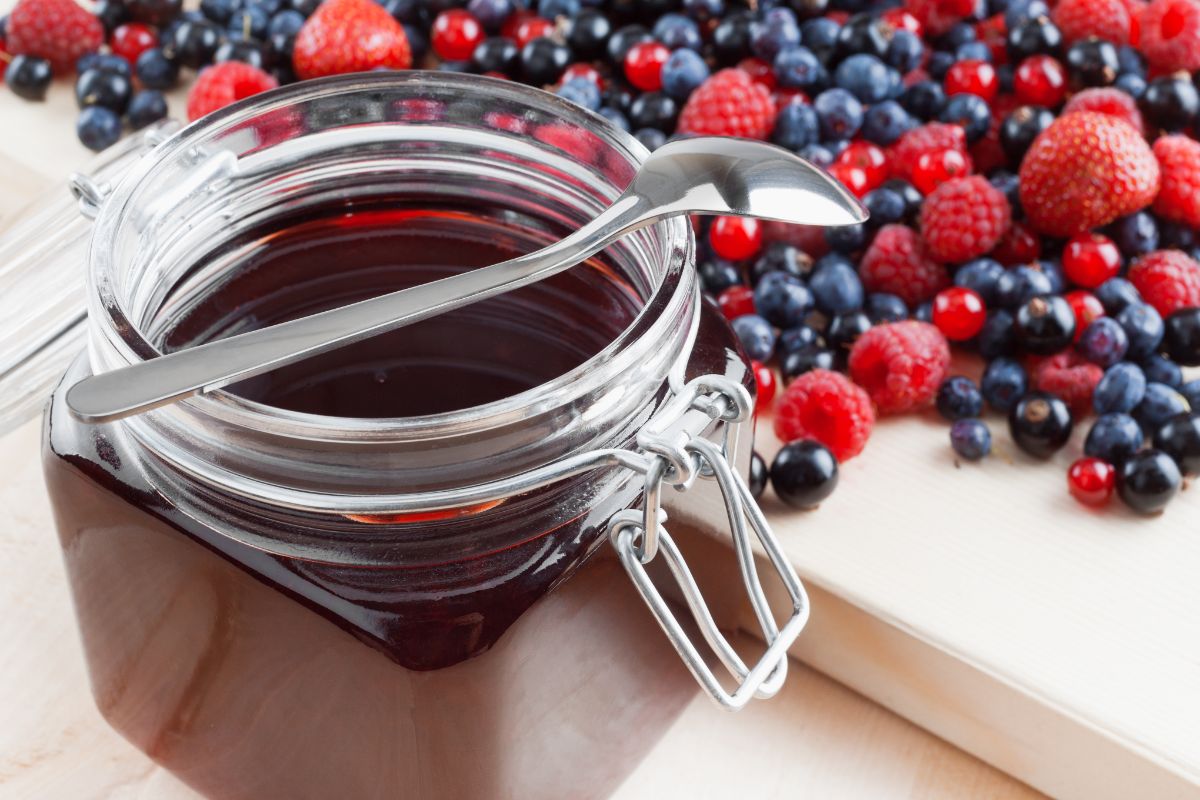When canning jelly, mash fruit in a saucepot with fresh water. Boil and simmer the mixture before straining it with a double-layer cheesecloth. Combine the hot juice with sugar and lemon juice and cook for 15 minutes. Ladle the hot jelly into hot jars and process for 10-20 minutes in a water bath canner.
Should Jelly be Water Bath Canned or Pressure Canned?
The USDA recommends water bath canning jelly and hot jam to reduce the chances of mold growth. Pressure canners are not recommended for canning jelly because the temperature is too high, and they would destroy the product.
Print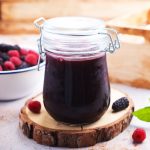
Mixed Berry Jelly Canning Recipe
- Total Time: 24 hours, 35 minutes
- Yield: 6 half-pints 1x
Description
This jelly recipe is perfect for when you have too many berries and want to preserve your harvest! While this recipe uses fruits that typically require pectin, adding fresh lemon juice and maintaining the ratio of unripened and ripened fruit render pectin unnecessary.
Ingredients
- 4 cups blueberries
- 4 cups raspberries
- 4 cups blackberries
- ¾ cup lemon juice, freshly squeezed
- 3 cups sugar
Instructions
- Select a good balance of underripe and ripe fruit for the jelly. Use ¼ underripe fruit and ¾ ripe fruit to balance out the amount of natural pectin, as this recipe doesn’t use any liquid or powdered pectin.
- Inspect and prepare six half-pint jars with their screw bands and lids. Wash them all in warm soapy water and rinse them thoroughly with warm water.
- Put fresh water in a large pot, submerge the canning jars, and simmer the water to heat the jars. Keep the jars hot until filling time. Do not sterilize the jars in boiling water since the processing time is 10 minutes.
- Get the water bath canner ready by loading the canning rack into the canner and adding warm, fresh water to fill the canner halfway. Heat the canner over medium-high heat to a simmer at 180°F.
- As the canner is heating, prepare the berries. Rinse the berries in cool running water. Do not soak them. Cut the larger ones into smaller pieces.
- Thoroughly mash the fruits using a potato masher in a saucepot with water. Boil the fruit-water mixture, cover it, and then simmer it for 10 minutes.
- Use a dampened jelly bag or a two-layer cheesecloth to strain the hot fruit juice to remove seeds and uncooked skins or pulp.
- Combine the hot fruit juice, sugar, and lemon juice in a large saucepot. You may add ½ teaspoon of butter to reduce foaming during cooking if desired.
- Heat the mixture over high heat to a hard boil while stirring constantly to dissolve all the sugar and enhance the bond with the natural pectin in the berries and the lemon juice.
- Check the jelly for doneness by taking the temperature of the jelly. At sea level, the jelly must reach 220°F. For every 1,000ft gained in elevation, the required temperature drops 2 degrees Fahrenheit until the safe minimum temperature of 212°F is achieved.
- If you don’t have a thermometer, use the spoon test. Put a cool metal spoon into the jelly and then hold it sideways at 12 inches off the steam. The jelly is fully cooked if two drops form and flow together as a sheet or hang off the spoon’s edge.
- Remove the jelly from the heat and immediately skim off any remaining foam.
- Use a canning funnel and ladle to fill completely drained hot jars with the hot jelly. Leave ¼-inch headspace.
- Remove air bubbles using a wooden spoon.
- Wipe the jar rims with clean paper towels dampened with warm water. Center new canning lids and clean screw bands on the jars until fingertip tight.
- With the water in the canner at 180°F, load each jar upright, free-standing, and untilted into the canner. Ensure the water covers the tops of the jars by 1-2 inches. Have hot water reserved in case you need to top up the canner.
- Heat the canner over high heat to bring it to a rolling boil. Close the canner lid and process the filled jars with the processing time per elevation:
Processing Time Per Elevation
- 0 – 1,000ft: 10 minutes
- 1,001 – 6,000ft: 15 minutes
- Above 6,001ft: 20 minutes
Post Processing
- Remove the canner from the hot burner and open the lid with the steam facing away from you. After 5 minutes, remove the jars one by one using canning tongs.
- Set the jars upright with at least 2 inches of free-standing space on warm towels on a countertop.
- Allow the jars to cool to room temperature for 12-24 hours. Do not retighten the lids.
- Remove each screw band and inspect the jar seal. No seal should flex when you press it. Reprocess any unsealed ones with brand-new lids within 24 hours. The alternative is to refrigerate them and use them within one month or freeze the jelly in new airtight containers for up to 1 year.
- Wash, dry, label, and keep the sealed jelly jars in a cool, clean, dry, dark place.
- Prep Time: 10 minutes
- Canning Time: 10 minutes
- Cook Time: 15 minutes
Nutrition
- Serving Size: 1 half-pint
- Calories: 533kcal
- Sugar: 119g
- Sodium: 4mg
- Fat: 1g
- Saturated Fat: 1g
- Carbohydrates: 135g
- Fiber: 13g
- Protein: 3g
Is Pectin Needed for Canning Jelly?
Most canning jelly recipes do not require commercial pectin because most jelly-making fruits and fruit juices have enough natural pectin. Pectin binds with the sugar while cooking the fruits in the presence of acid from the fruits or when adding acidic fruit juice to thicken the jelly.
You should add pectin in the following situations:
- When canning jelly from low-pectin fruits or fruits low in natural acid. These include elderberries, California grapes, loquats, chokecherries, grapefruit, oranges, ripe blackberries, sour cherries, and ripe apples.
- When canning jelly from apricots, figs, strawberries, Western Concord grapes, Italian plums, guavas, blueberries, peaches, raspberries, and pears. These always require additional pectin, acid, or both.
- Overripe fruits without enough natural pectin, such as lemons, quinces, crabapples, sour blackberries, gooseberries, sour apples, currants, non-Italian plums, Eastern Concord grapes, and loganberries.
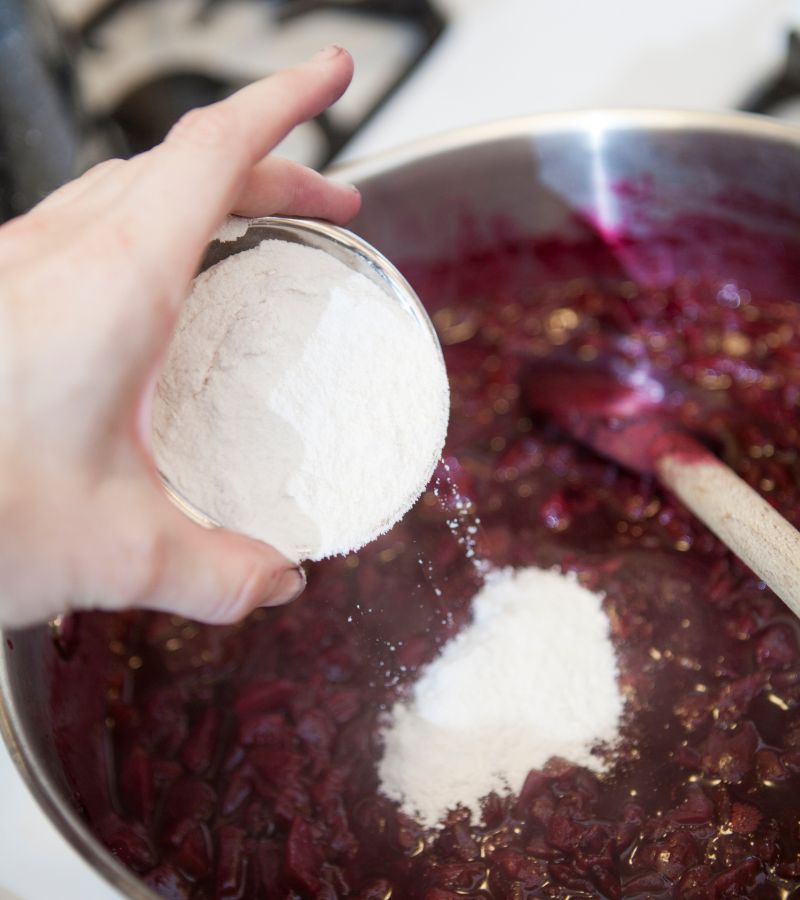
How to Sweeten Jelly for Canning
Beet and cane sugar are safe for sweetening and preserving canned jelly. Honey and corn syrup are also great alternatives, but they may affect gelling and overpower the fruit flavor if used excessively. Honey can be used in recipes that use store-bought pectin. Replace sugar with honey in a 1:1 ratio.
The NCHFP doesn’t recommend DIY low-sugar or sugar-free canned jellies by simply reducing or removing sugar from the recipe. However, you can use modified commercial pectins and eliminate or use less sugar than the jelly recipe requires. You could also use stevia in jellies with a low methoxyl pectin content.
Fruit Juice Substitutions for Canning Jelly
Another approved sugar alternative is using frozen unsweetened juice to replace water or sugar syrup. Use the following substitutions when swapping fruit juice for sugar:
- Apple juice for apples, pears, peaches, plums, or apricots.
- Frozen pineapple juice for peaches or pears.
- Red grape juice for plums or red cherries.
- White grape juice for peaches, apricots, and pears.
What Type of Jars Should be Used for Canning Jelly?
It’s best to use half-pint or pint-sized Mason canning jars with two-piece self-sealing lids for canning jelly. As always, use brand-new canning lids and clean ring bands when canning. It is also best to use glass jars with straight sides to make serving the jelly easier.
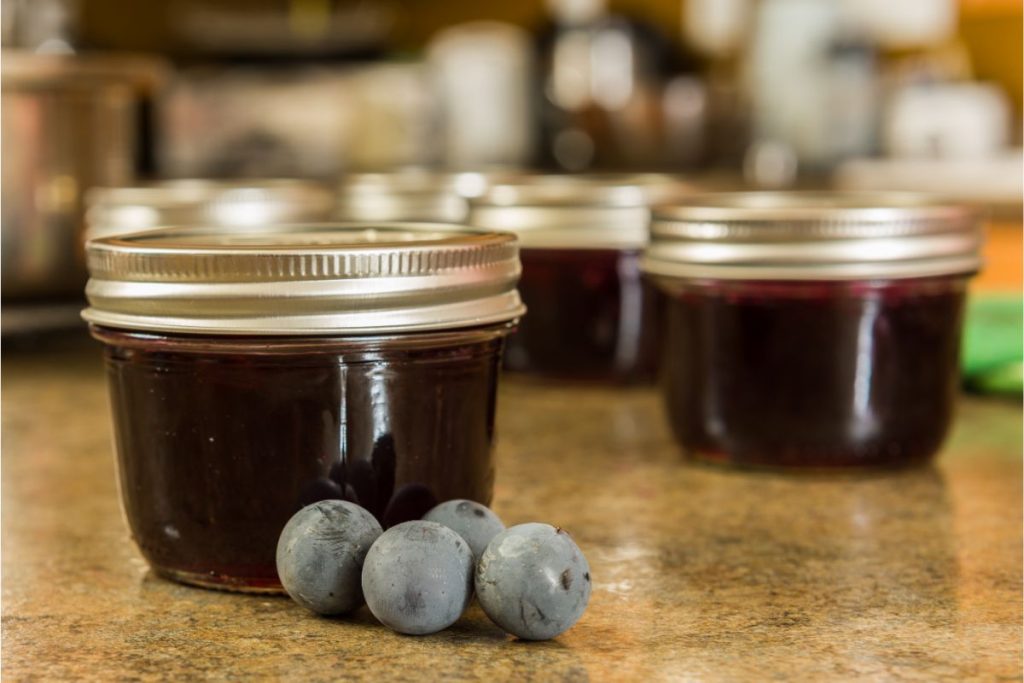
What are the Best Fruits to Use When Canning Jelly?
The best fruits for canning jelly are varieties with high acid and high pectin content. Since fruits have the highest pectin content when underripe and less when they are fully ripe, the trick is to use them in jelly in the correct proportions. A good rule of thumb is to mix ¾ ripe fruits with ¼ underripe fruits or mix low-pectin fruits with other high-pectin fruits.
How Long Does it Take to Can Jelly?
The time for canning fruit jelly is 24 hours and 40 minutes. This includes time for prepping, cooking the fruits, canning, and cooling the jars.
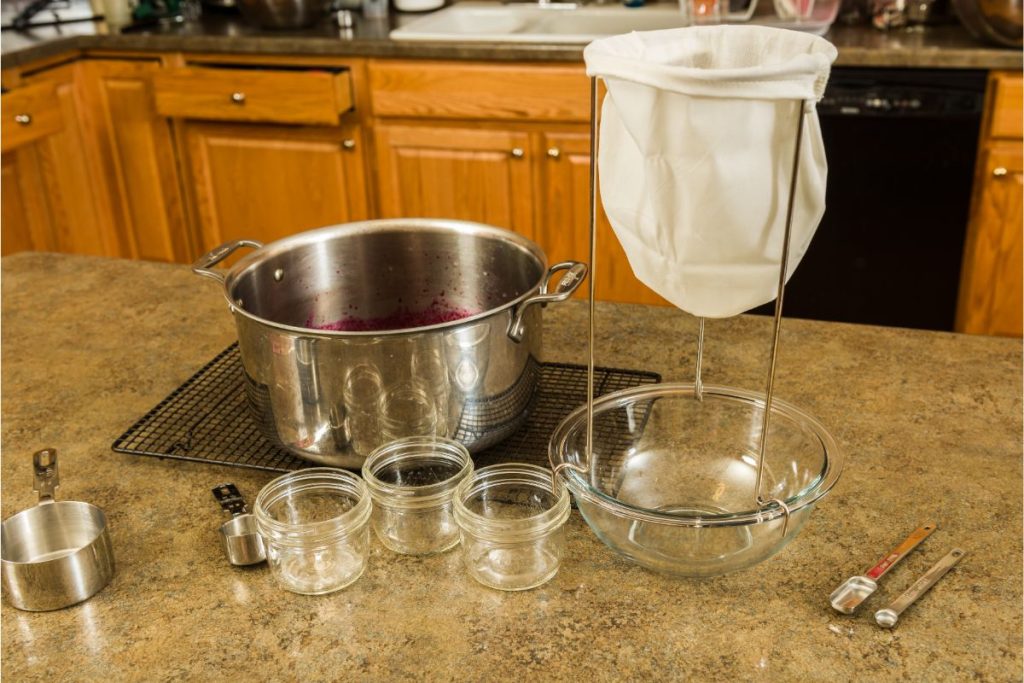
What is the Difference Between Jelly and Jam?
Jellies are made using fruit juice from cooked fruits, while jams are made from ground or crushed fruits. Both jellies and jams involve cooking with sugar, which helps pectin stick cooked fruits or fruit juice together. Jellies are firmer and almost translucent, with all or most of the seeds and skins strained out. Jams are less firm than jellies and usually include fruit seeds, pulp, or skins.
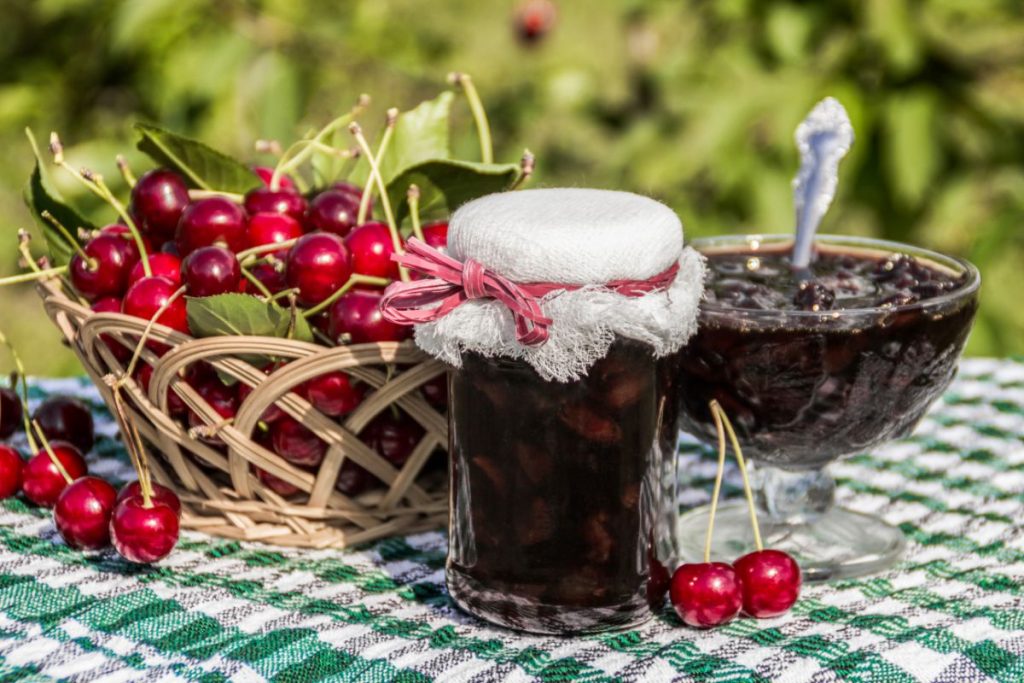
What is the Best Way to Keep Jelly from Spoiling?
The best way to store jelly to keep it from spoiling is to store sealed and labeled jars at room temperature in a cool, clean, dark, dry place. While the storage conditions are important, many things can be done while processing the jelly to keep it from spoiling or having a poor result:
- Add ½ teaspoon of butter toward the end of cooking the fruit to reduce foaming.
- Doubling or tripling the recipe may cause softening or poor gelling.
- Ensure you have enough sugar, as too little leads to poor gelling.
- Overcooking and excess pectin and little sugar may cause jelly to harden.
- Prevent crystals from forming by stirring the fruits while cooking until the sugar dissolves.
How Long Can Canned Jelly Be Stored?
The USDA recommends keeping jelly at room temperature for up to 12 months. Most food preservation enthusiasts store their canned jelly for 12-18 months. Once opened, the USDA recommends refrigerating canned fruit jelly and using it within six months.

